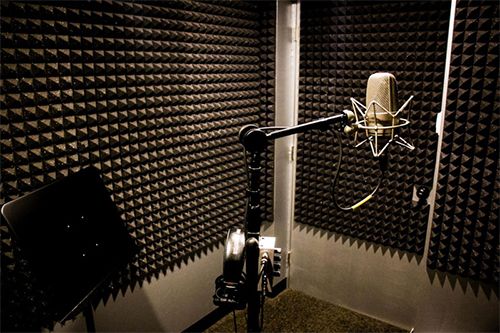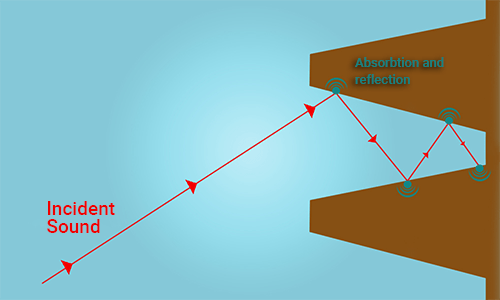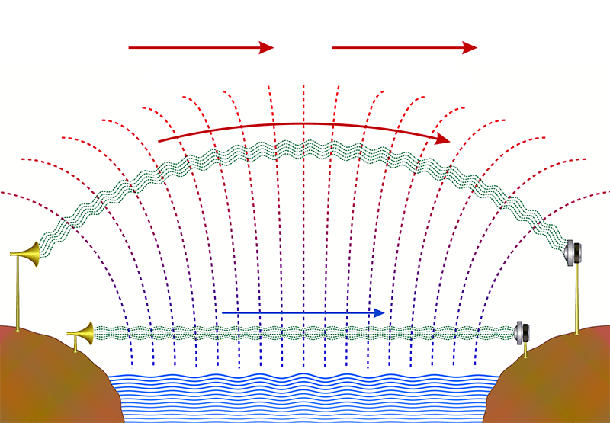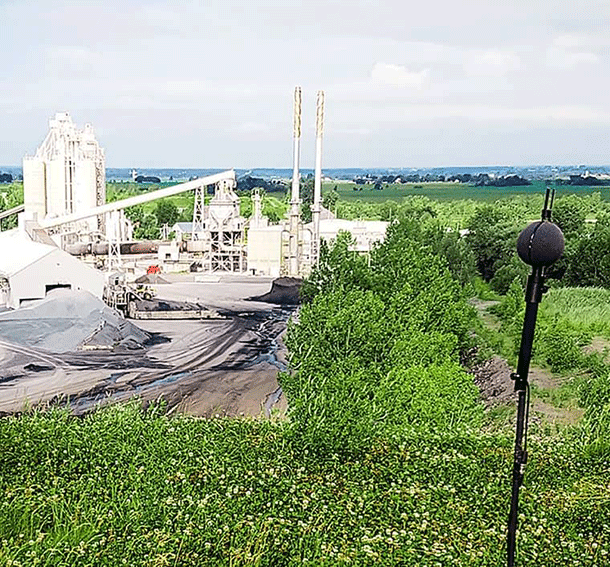Sound waves develop in a compressible medium, such as air, when there are very short variations in pressure. A sound is what the ear perceives from this fluctuation. If the wave created by a sound source crosses the medium and arrives straight at the listener, then we call this a direct sound or a dry sound. By contrast, sound waves generally don’t reach the listener directly. Instead, they are reflected by an obstacle (e.g. wall, floor, object). This phenomenon is what we call an echo. What’s more, if the sound wave is reflected several times before reaching the ear, we call this a reverberation. This type of sound is widely used in music (e.g. concerts) or to enhance people’s vocal range (e.g. at choir). Figure 1 helps to differentiate the three types of sound perceived when you listen to guitarists as they play on stage.

The Bad Side of Reverberated Sound
Although sometimes reverb is a good thing, most of the time it’s a nuisance to listeners. Indeed, this phenomenon amplifies the type of sound that a source can produce, including machine noise and ventilation. The longer the wave takes to reach the listener’s ear canal, as compared to the original sound, the more its volume seems to amplify. Depending on the area in question, you may want a short reverberation time (for instance, in a cinema hall or a classroom) or a long time (e.g. a concert hall or a church). To do this, you need to change the composition of wall surfaces in the analysed area. This makes adjusting the reverberation time possible.
How to Change an Environment’s Reverb Time
To maximize reverberation time, the walls in the area must be made of an acoustically reflective material, such as concrete or plasterboard. Likewise, decreasing the absorption area of the room also shortens reverberation time. In other words, the fewer the number of obstacles that can reflect sound waves, the lower the reverberation.
Conversely, to reduce reverberation time while maximizing acoustic comfort and privacy, the walls of the room must be made of absorbent materials, such as fiberglass foam and other soundproofing materials. And by expanding the absorption area, you increase the number of times the wave bounces off a surface. Therefore, the wave comes into contact more often with the absorbent material.
To carry out acoustic analysis with minimal reverberation time, we generally use an anechoic chamber. This is a chamber with walls that are covered with a highly acoustically absorbing layer, which prevents sound waves from being reflected. These rooms are mostly used in recording studios, so that the artist is not bothered by the reflection of their music on the walls. Figure 2 shows a typical recording room with anechoic walls.

This is precisely why movie theatres have their walls covered with carpeting, because carpets are very good at absorbing sound. Figure 3 shows the behaviour of these walls as they come into contact with sound waves.

As the diagram shows, the first points of contact within the absorbent materials attenuate the reflected sound wave significantly, and the geometry enables the next ones to further attenuate the sound.
References
- Figure 2: Triomnistudios, "Photo Gallery".
- Figure 3: Joker’s Son, "Dans une chambre anéchoïque, le bruit c’est vous".
- Psycom (2003), "La réverbération acoustique".


